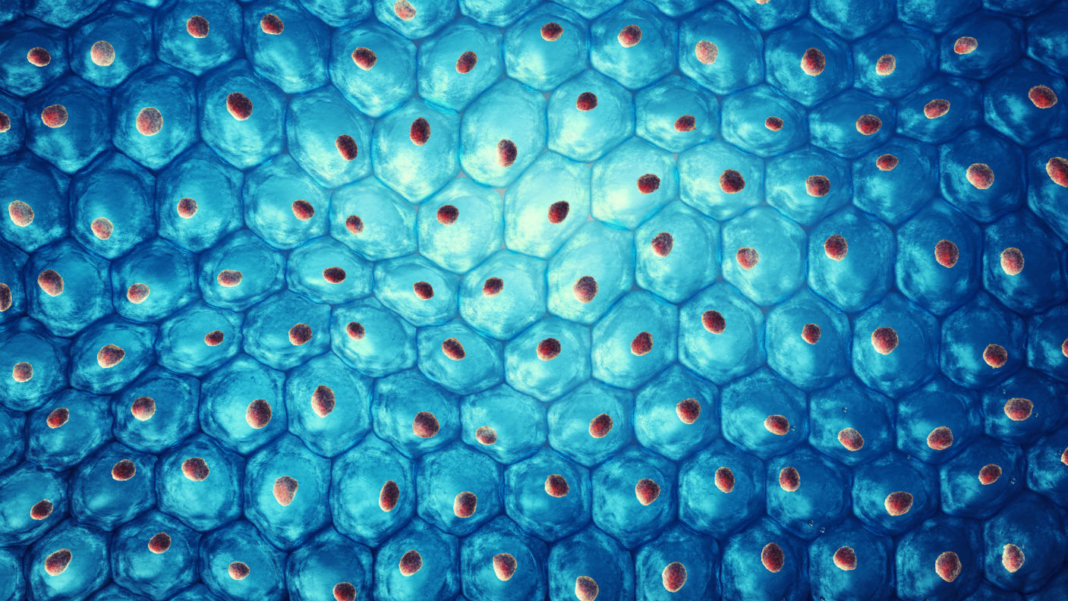Nanotechnology lets us create, alter, or study biological structures and processes at the 100 nanometer and under level. When it comes to cells and cellular components, nanotechnology offers a new way to modify cell types and tissues to use in treating human disease, bringing together diverse engineering and biological methodologies and approaches.
In regenerative medicine, advances in nanotechnology include such potential applications as [1]:
- Drug delivery, such as targeting tumors
- Stem cell therapy
- Creating scaffolds that support human tissues
- Imaging biological processes [2]
- Understanding how cell types behave in vivo
- Measuring cells [3]
- Perturbing cells
- Diagnosing and treating patients
Nanotechnology holds much promise, especially in the context of drug delivery applications where, for example, a tumor can be directly targeted while leaving intact surrounding tissue. One notable benefit of nanotechnology is the ability of nanoparticles to cross the blood brain barrier, thereby offering a method of delivering therapies in diseases and disorders of the brain, a traditionally clinically challenging area of research.
Nanoparticles, or specially engineered small-scale tools exist in many configurations and are designed to carry out unique functions. They are often studied in the context of drug delivery Types of nanoparticles include [2]:
- Liposomes, or round vesicles
- Albumin-bound nanoparticles
- Polymeric nanoparticles
- Iron oxide nanoparticles
- Quantum dots used in imaging applications
- Gold nanoparticles used in imaging and sensing applications
Much research using nanoparticles has focused on regenerative medicine and cell biology. Examples of these applications include [3]:
- An array of polymeric needles that penetrate the skin to deliver a vaccine, allowing for deeper and less painful punctures and accelerated healing time
- Molecularly targeting cancer cells in vivo
- Tissue engineering, either in vivo or in vitro, with applications in blood vessel, cartilage, nerve, bladder, and bone regeneration
The specific nanomaterial used can greatly impact the regenerative ability of a cell type or tissue type. Research is ongoing to understand how different materials, including silk, hydroxyapatite, synthetic polymers, and collagen impact tissue regeneration. The type of material used is largely dependent on the cell type of interest. For example, researchers interested in connective tissue or extracellular matrix regeneration would turn to fibroblasts and a collagen scaffold. Researchers interested in delivering a drug intracellularly to endothelial cells might use a nanoparticle capable of traversing a cell’s plasma membrane while securely transporting the drug to the target site.
Nanotechnology in stem cell research is an exciting area of study. Areas of exploration include:
- Using quantum dots to study stem cell differentiation, such as labeling mesenchymal stem cells and tracking their differentiation into adipocytes, chondrocytes, and osteocytes [4]
- Isolating stem cells using magnetic nanoparticles to then be used as a stem cell therapy [5]
- Delivering biomolecules intracellularly using polymeric nanoparticles and liposomes to regulate embryonic stem cell differentiation
- Carbon nanotubes can be prepared with biological molecules and traverse the cell membrane and cell nucleus. One study shows that carbon nanotubes were able to modulate embryonic kidney cell growth rates and adhesion properties.
Nanotechnology has enormous potential when combined with regenerative medicine and stem cell therapy approaches and tools. No matter where you may be in your nanotechnology and stem cell therapy research, Leo Corps can help you identify a solution or streamline your existing workflow. Contact us today.
References Yang Y, Chawla A, Zhang J, Esa A, Jang HL, Khademhosseini A. Applications of Nanotechnology for Regenerative Medicine; Healing Tissues at the Nanoscale. In: Principles of Regenerative Medicine. Elsevier; 2019:485-504. doi:10.1016/B978-0-12-809880-6.00029-1 Wang EC, Wang AZ. Nanoparticles and their applications in cell and molecular biology. Integr Biol (Camb). 2014;6(1):9-26. doi:10.1039/c3ib40165k Wong IY, Bhatia SN, Toner M. Nanotechnology: emerging tools for biology and medicine. Genes & Development. 2013;27(22):2397-2408. doi:10.1101/gad.226837.113 Ohyabu Y, Kaul Z, Yoshioka T, et al. Stable and nondisruptive in vitro/in vivo labeling of mesenchymal stem cells by internalizing quantum dots. Hum Gene Ther. 2009;20(3):217-224. doi:10.1089/hum.2008.100 Wang Z, Ruan J, Cui D. Advances and Prospect of Nanotechnology in Stem Cells. Nanoscale Res Lett. 2009;4(7):593-605. doi:10.1007/s11671-009-9292-z

